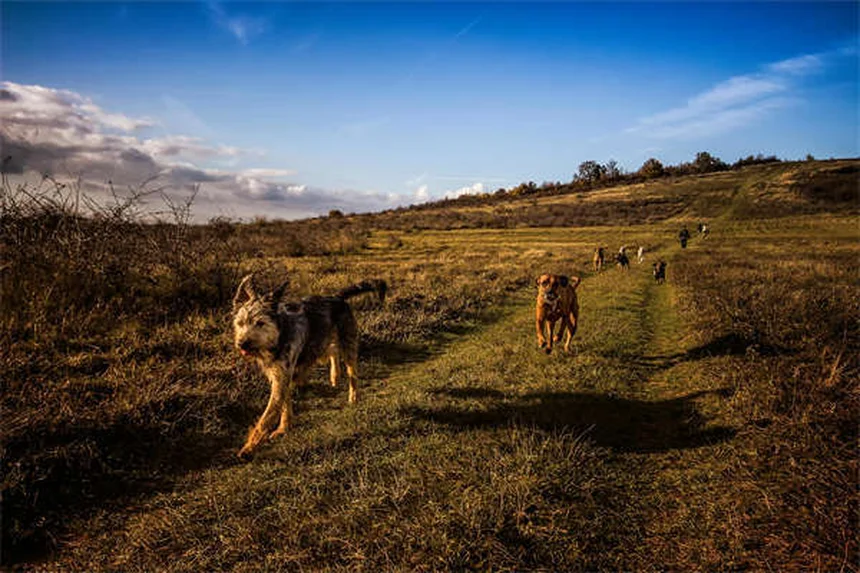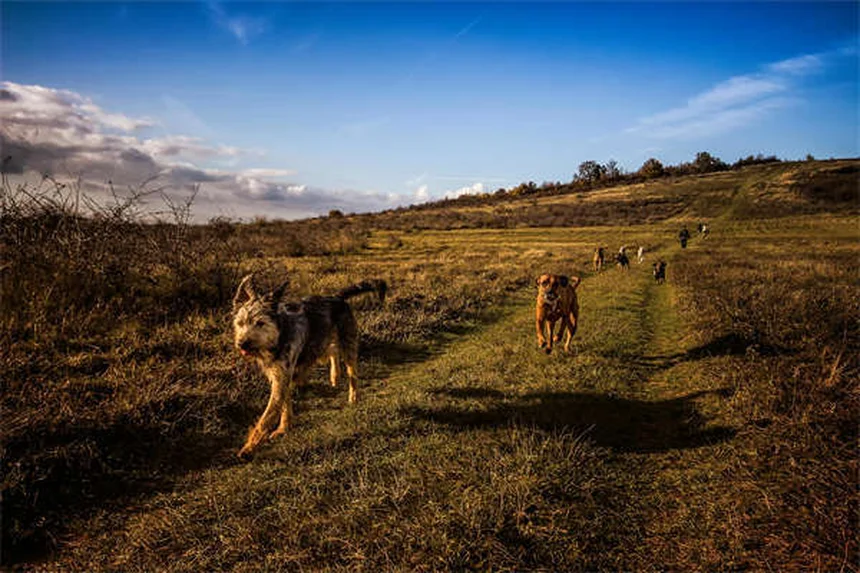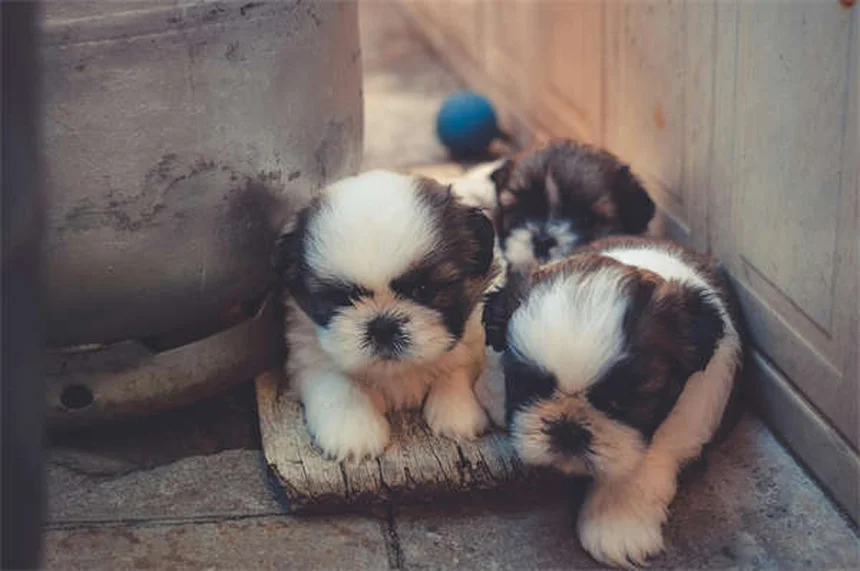Advertisement
Is your puppy chewing everything in sight? The answer is: yes, that's completely normal teething behavior! Just like human babies, puppies go through an uncomfortable teething phase where their adult teeth push through the gums. I've helped countless pet parents navigate this challenging period, and let me tell you - those tiny teeth can cause big problems if you're not prepared.During teething, which typically occurs between 4-7 months, your puppy's mouth will be sore and itchy. They'll instinctively chew to relieve the discomfort, often targeting furniture, shoes, or even your hands. But here's the good news - with the right approach, we can make this process much easier for both of you. In this guide, I'll share my proven strategies for keeping your teething puppy happy and your belongings intact.
E.g. :How to Give Your Cat or Dog Oral Medication: 7 Vet-Approved Tricks
Advertisement
- 1、Understanding Your Puppy's Teething Journey
- 2、Creating a Puppy-Safe Environment
- 3、Top Teething Toy Recommendations
- 4、Soothing Solutions for Sore Gums
- 5、Training Through the Teething Phase
- 6、When to Seek Professional Help
- 7、Bonus Tips From a Puppy Pro
- 8、Beyond the Basics: Advanced Teething Insights
- 9、Nutritional Support for Teething Puppies
- 10、Teething and Sleep: The Surprising Link
- 11、Teething Across Different Breeds
- 12、Long-Term Benefits of Good Teething Care
- 13、FAQs
Understanding Your Puppy's Teething Journey
Why Puppy Teething Matters
Let me tell you something - teething isn't just about those tiny teeth coming in. It's a major milestone in your puppy's development that affects their behavior, comfort, and even your furniture! I've seen so many new pet parents surprised by how much this phase impacts their furry friend.
Think about it this way - when you have a toothache, you're miserable, right? Now imagine having 28 baby teeth falling out and 42 adult teeth coming in all within a few months! No wonder puppies get so cranky. The good news? With the right approach, we can make this process much easier for both of you.
The Puppy Teething Timeline
Here's how it typically goes down:
| Age | What's Happening | What You'll Notice |
|---|---|---|
| 0-3 weeks | No teeth yet | Just gums for nursing |
| 3-8 weeks | Baby teeth coming in | 28 tiny teeth appear |
| 4-7 months | Adult teeth replacing baby teeth | Chewing everything in sight! |
| 6-7 months | Teething complete | 42 permanent teeth in place |
Did you know bigger dogs often finish teething faster than smaller breeds? That's one of those fun facts I love sharing with new puppy parents. But regardless of size, all puppies need our help through this uncomfortable phase.
Creating a Puppy-Safe Environment
 Photos provided by pixabay
Photos provided by pixabay
Puppy-Proofing Like a Pro
You wouldn't let a toddler loose in your home without baby-proofing, right? Same goes for teething puppies! I always recommend doing a "puppy eye view" inspection - get down on your hands and knees to spot potential hazards.
Here's my must-do checklist:• Medications and cleaning supplies - lock them up!• Electrical cords - use cord protectors or hide them• Small objects - if it fits in their mouth, it's a choking hazard• Toxic plants - check if yours are safe• Trash cans - get ones with secure lids
The Perfect Puppy Space
Setting up a designated area for your teething pup makes all the difference. I suggest creating a "yes zone" where everything is safe to chew. Include:
"When I helped my neighbor set up their puppy space, we made sure to include different textures - soft blankets, rubber toys, and even a cooling mat. The pup loved having options!"
Remember to rotate toys weekly to keep things interesting. A bored puppy with sore gums will find their own entertainment - usually your favorite shoes!
Top Teething Toy Recommendations
Why Toy Selection Matters
Not all chew toys are created equal! I've tested dozens, and here's what I've learned: the best teething toys soothe gums without being too hard. You should be able to make a slight indentation with your fingernail.
Ever wonder why some toys work better than others? It's all about texture and flexibility. Puppies need toys that massage their gums without damaging emerging teeth. That's why I always recommend these top performers:
 Photos provided by pixabay
Photos provided by pixabay
Puppy-Proofing Like a Pro
After helping hundreds of puppies through this phase, these are my go-to choices:
1. KONG Puppy - The classic for good reason! Stuff it with treats for extra fun.2. Cool Teething Stick - Great for gentle chewing and gum relief.3. Bristle Bone - Cleans teeth while they chew - two benefits in one!
Pro tip: Have at least 5-6 different toys in rotation. Variety keeps your pup engaged and helps you discover their preferences. My friend's golden retriever puppy went crazy for anything rubbery, while her sister's poodle preferred softer fabrics.
Soothing Solutions for Sore Gums
The Magic of Frozen Treats
Here's a little secret from my years of puppy parenting: cold is gold for teething pups. The numbing effect helps relieve pain while keeping them entertained.
My absolute favorite trick? Take a KONG toy, fill it with a mix of wet puppy food and water (about 3 parts food to 1 part water), then freeze it. It becomes a delicious, long-lasting gum soother that's perfect for crate time or when you need a break.
Puppy-Friendly Frozen Snacks
Not all human foods are safe, but these frozen options work wonders:
• Carrot sticks (great for chewing)• Blueberries (tiny and tasty)• Green beans (crunchy when frozen)• Watermelon chunks (seedless only!)
Warning: Skip the ice cubes! They're too hard on developing teeth. I learned this the hard way when my first puppy cracked a tooth. Now I always recommend softer frozen options instead.
Training Through the Teething Phase
 Photos provided by pixabay
Photos provided by pixabay
Puppy-Proofing Like a Pro
Here's something many new puppy parents don't realize: teething time is prime training time! Those little needle teeth hurt, but how you respond makes all the difference.
When puppy teeth meet human skin:1. Say "ouch!" in a high-pitched voice2. Immediately offer an appropriate chew toy3. If biting continues, walk away calmly4. Return when they're calm to try again
Consistency is key. I've seen families who follow this method have puppies who learn bite inhibition in weeks, while those who are inconsistent struggle for months.
Positive Reinforcement Works Wonders
Did you know puppies learn faster when rewarded for good behavior? It's true! Keep treats handy to reward gentle play and appropriate chewing.
"In my experience, the puppies who get the most praise for chewing the right things are the quickest to leave your shoes alone."
If you're dealing with excessive mouthiness or aggression, don't hesitate to consult your vet. Sometimes what seems like normal teething behavior can indicate other issues.
When to Seek Professional Help
Recognizing Warning Signs
Most teething discomfort is normal, but how do you know when it's something more? Here are red flags I always watch for:
• Refusing to eat for more than a day• Excessive drooling or bad breath• Bleeding that doesn't stop• Broken teeth or unusual swelling
Remember that joke about puppies chewing everything? Well, when they won't chew at all, that's when we worry. Trust your instincts - you know your pup best.
Your Veterinary Support Team
Here's the great news: you're not alone in this teething journey! Your vet can:
• Check for retained baby teeth (common in small breeds)• Recommend pain relief options if needed• Suggest specialized toys for difficult cases• Address any infection concerns
I always tell my clients - a quick checkup now can prevent big dental problems later. It's like insurance for your puppy's million-dollar smile!
Bonus Tips From a Puppy Pro
Survival Strategies for Puppy Parents
After helping countless puppies (and their humans) through teething, here are my top secret weapons:
1. Keep a chew toy in every room - no more mad dashes to stop destruction!2. Freeze wet washcloths for quick, cheap gum relief3. Use bitter apple spray on off-limits items (test first!)4. Swap toys weekly to maintain interest5. Take lots of photos - those tiny teeth are adorable!
Celebrating Milestones
Here's something fun to try: make a "tooth chart" to track which adult teeth come in. It's a great way to bond with your pup and celebrate progress. I've even seen creative owners make little tooth fairy gifts when baby teeth fall out!
Remember, this phase doesn't last forever. Before you know it, you'll have a grown dog with a beautiful, healthy smile - and probably some funny stories about the things they chewed along the way!
Beyond the Basics: Advanced Teething Insights
The Hidden Connection Between Teething and Behavior
You might not realize this, but teething affects way more than just your puppy's mouth. It impacts their entire mood and personality during this phase. I've noticed puppies often become more clingy or irritable when their gums hurt the most - usually around 4-5 months old.
Here's an interesting comparison of common behavioral changes:
| Normal Puppy Behavior | Teething-Related Changes |
|---|---|
| Playful nipping | Intense, focused chewing |
| Occasional whining | Increased vocalization |
| Moderate energy | Restlessness or lethargy |
| Normal appetite | Chewing food differently |
Ever wonder why some puppies suddenly forget their training during teething? Their discomfort literally changes how they experience the world. That's why I always recommend extra patience and shorter training sessions during peak teething weeks.
The Science Behind Puppy Chewing
Let me geek out for a second about something fascinating - puppies actually produce natural pain relievers when they chew! The action of gnawing releases endorphins that help soothe their sore gums. That's why they become little chewing machines during this phase.
This explains why redirecting to appropriate chew toys works so well. We're not just protecting our furniture - we're helping their bodies manage discomfort naturally. Pretty cool, right? The key is providing enough varied chewing options to keep this natural process working for them.
Nutritional Support for Teething Puppies
Foods That Help (and Hurt)
What you feed during teething matters more than you might think! I always suggest slightly softening kibble with warm water for puppies struggling to eat. The warmth helps relax their gums while making meals easier to manage.
Here are some nutritional powerhouses for teething pups:• Canned pumpkin (not pie filling) - great on sore gums• Plain yogurt - cooling and probiotic-rich• Bone broth - packed with minerals for tooth development• Soft fruits like bananas - easy to lick and chew
Supplements Worth Considering
While most puppies don't need supplements, some can benefit from extra support. I've had great results with:
1. Omega-3 fatty acids - reduces gum inflammation2. Probiotics - supports overall health during stress3. Calcium-rich treats - for proper tooth development
But here's my golden rule: always check with your vet before adding supplements. What works for one pup might not be right for another. I learned this lesson when my sister's bulldog puppy reacted poorly to fish oil - turns out he needed a different form!
Teething and Sleep: The Surprising Link
Why Puppies Sleep Differently When Teething
If your puppy's sleep patterns have changed, teething might be the culprit. Discomfort can make it harder to settle down or stay asleep. I've seen many puppies who normally sleep through the night suddenly waking up more often during peak teething weeks.
Here's a pro tip that works wonders: create a bedtime chewing ritual. About 30 minutes before bedtime, offer a special chew toy reserved just for this time. It helps relax their gums and creates a soothing routine. My current foster puppy loves his frozen carrot "nightcap" before lights out!
Creating the Perfect Sleep Environment
You can make small adjustments to help your teething pup rest better:
• Use a cooling mat in their bed (heat worsens inflammation)• Try a white noise machine to mask discomfort sounds• Keep their favorite chew toy nearby for midnight soothing• Consider a snuggle puppy with heartbeat for comfort
Remember how you feel when you have a toothache and can't get comfortable? Puppies experience the same frustration. A little extra bedtime TLC goes a long way during these weeks.
Teething Across Different Breeds
Small Breed vs. Large Breed Differences
Did you know teething experiences vary dramatically by size? Smaller breeds often have more challenges because their tiny mouths get crowded more easily. I've seen many toy breed puppies retain baby teeth that need veterinary removal.
Meanwhile, giant breed puppies may seem to breeze through teething, but they actually need extra durable chew toys to withstand their powerful jaws. The table below shows some key differences:
| Factor | Small Breeds | Large Breeds |
|---|---|---|
| Teething Duration | Often longer | Usually shorter |
| Common Issues | Retained baby teeth | Broken adult teeth |
| Best Toy Type | Softer materials | Extremely durable |
Breed-Specific Chewing Personalities
After working with countless puppies, I've noticed fascinating breed tendencies:
• Retrievers often prefer carrying soft toys• Terriers typically enjoy vigorous shaking of toys• Herding breeds may nibble more gently• Bulldogs frequently favor rubbery textures
Knowing these tendencies helps you select the perfect teething solutions. For example, my neighbor's Labrador puppy went crazy for rope toys he could carry around, while the pug next door preferred squishy rubber toys he could gum intensely.
Long-Term Benefits of Good Teething Care
Setting Up Dental Health for Life
Here's something most puppy parents don't realize: how you handle teething directly impacts your dog's future dental health. Puppies who learn appropriate chewing habits grow into adults with better oral hygiene and fewer dental issues.
Think of it this way - you're not just surviving the shoe-chewing phase, you're establishing lifelong patterns. That's why I always emphasize positive reinforcement during teething. The puppy who learns to love their chew toys today will likely continue choosing them over furniture as an adult.
The Emotional Bonding Bonus
There's a hidden silver lining to the teething struggle - it's actually a golden opportunity to strengthen your bond. When you patiently guide your puppy through this uncomfortable phase, you build trust that lasts forever.
I'll never forget the first puppy I helped through teething. That little guy followed me everywhere afterward, as if he knew I'd helped him through a tough time. Now, years later, he still greets me with extra enthusiasm. That's the special connection teething can create when handled with care and understanding.
E.g. :Puppy Teething and Nipping: A Survival Guide – American Kennel ...
FAQs
Q: How long does puppy teething last?
A: Puppy teething typically lasts from about 4 months to 7 months of age. Here's what you need to know: the process begins when adult teeth start pushing against the roots of baby teeth, usually around 4 months. By 6-7 months, most puppies have all 42 adult teeth fully erupted. However, I've noticed larger breeds often finish teething slightly faster than smaller dogs. The most intense chewing usually happens around 5-6 months when those big canine teeth come in. Remember, every puppy is different - some breeze through teething while others need extra comfort measures.
Q: What are the best toys for a teething puppy?
A: After testing dozens of options with my clients' puppies, I recommend these three types of teething toys: First, rubber toys like KONG Puppy that you can stuff with treats and freeze - the chewing action massages gums while the cold numbs pain. Second, textured toys like the Petstages Cool Teething Stick that provide different surfaces for gnawing. Third, soft rope toys that are gentle on emerging teeth but satisfy the urge to chew. Pro tip: Avoid anything too hard (you shouldn't be able to make a dent with your fingernail) and rotate toys weekly to keep your pup interested.
Q: Can I give my teething puppy ice cubes?
A: I strongly advise against giving ice cubes to teething puppies. Here's why: those hard cubes can actually damage your puppy's developing teeth. I learned this lesson the hard way when a client's puppy chipped a tooth on ice. Instead, try these safer cold options: frozen carrot sticks (great for chewing), chilled watermelon chunks (seedless only!), or a frozen wet washcloth. My personal favorite is stuffing a KONG toy with wet puppy food and freezing it - it provides hours of soothing chewing while delivering nutrition.
Q: How can I stop my teething puppy from biting me?
A: Teaching bite inhibition is crucial during teething. Here's my proven three-step method: First, when teeth touch skin, say "ouch!" in a high-pitched voice and immediately offer an appropriate chew toy. Second, if biting continues, calmly walk away - this teaches that mouthing ends playtime. Third, reward gentle behavior with treats and praise. I've found consistency is key - puppies whose families follow this approach consistently learn much faster. Remember, this phase will pass, but the lessons you teach now about gentle play will last a lifetime.
Q: When should I worry about my puppy's teething?
A: While most teething discomfort is normal, watch for these warning signs: refusal to eat for more than a day, excessive drooling with bad breath, bleeding that won't stop, or unusual swelling. I always tell my clients - if your normally voracious puppy suddenly isn't interested in food, it's time to call the vet. Other red flags include broken teeth or retained baby teeth (common in small breeds). Trust your instincts - you know your pup best. A quick vet visit can prevent serious dental issues down the road.

